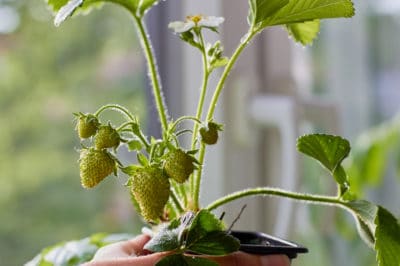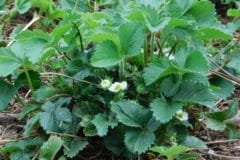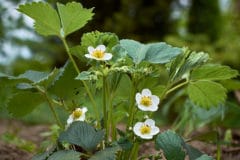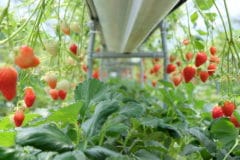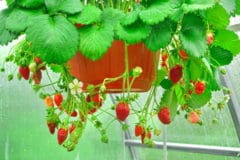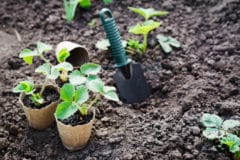Location, Location, Location
You can grow strawberries in any indoor area as long as you provide them with the equivalent of six hours of light per day. A sunny windowsill usually provides such conditions. A greenhouse or sun room is even better and allows you to grow more plants. You can also use grow lights, in which case you are limited only by the amount of space you want to dedicate to the project.
Choosing Varieties
Strawberries can be June bearers, ever-bearers and day-neutral types. All three can be grown indoors. You can also choose between commercial and wild varieties. Consider these:
- Alpine strawberries – although small, they have intense flavor.
- Northwest – June bearer, big berries.
- Chandler – ever-bearing, large and juicy.
- Ozark Beauty – large, mildly sweet.
- Seascape – day-neutral, large fruit.
Soil and Fertilizer
Strawberries like a rich, loose soil that drains well. The ideal pH is between 5.6 and 6.3. Even with good soil, they should be fertilized once a month with a potassium-rich fertilizer until they flower. After that switch to fertilizing every 10 days until you finish harvesting. Don’t use too much nitrogen as you will get lush leaves at the expense of flowers and fruits.
Containers
The strawberry plant has relatively shallow roots, so large planters aren’t necessary. You can use simple pots, build grow-boxes or choose one of the containers designed especially for growing strawberries. Vertical planters are available. Strawberry jars are attractive and if you grow hydroponically, you can use a strawberry tower. Make sure that the containers drain well.
Pollination
Grown out of doors, strawberries depend on insects for pollination. If you want fruit, you’ll have to hand pollinate – if not, don’t worry about it. Pollinate when the petals are fully opened, the pistil is yellow-green and the stamens are brown. Use a soft, small make-up brush. Move from one flower to the next and gently but thoroughly cover the pistil. Repeat the process for best results.
Temperature and Watering
Strawberries will do best when temperatures are between 68 to 77°F (20 to 25°C). However they will tolerate both high and lower temperatures to some extent. A sudden drop in temperature is more likely to be harmful than a gradual change. Since they are shallow-rooted, they need frequent (possibly daily) watering, but don’t let roots stand in water or they may develop rot.
